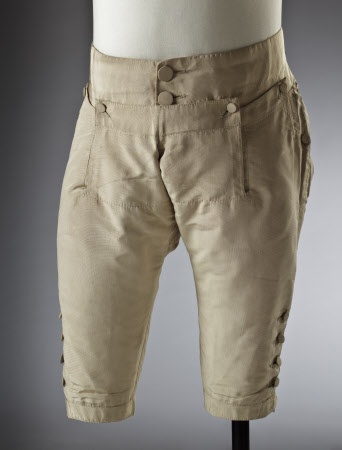Victorian Urban Legends: Wellington’s Breeches March 25, 2017
Author: Beach Combing | in : Modern , trackbackNice 19C story.
Mrs. Loudon was lately in the neighbourhood of Strathsfieldsaye, and being always anxious to visit spots remarkable for fine specimens of the vegetable world, and hearing that she was likely to gratify her taste at the gardens of the Duke of Wellington, she wrote to His Grace, conveying her special desire to see some ‘beeches’ for which the spot is celebrated. The letter was duly delivered, and, opening it with his usual promptitude, the octogenarian Duke raised his glasses, and, glancing at the contents, his eye caught hastily at the signature of the note ‘C. J. Loudon,’ and he at once came to the conclusion that it came from Charles James Bishop of London, more particularly as the hand-writing of the note bore a close resemblance to that of the Right Reverend Prelate. But, whilst there was nothing very remarkable in the fact of a note from the Bishop, the object of it did raise His Grace’s ‘most especial wonder’ ; for that same rapid glance which had converted an amiable lady into a learned Bishop, also, with a success which the very spirit of mischief, Puck, himself could not have surpassed, metamorphosed the majestic beeches of Strathfieldsaye into the nether garments of their noble owner—in fact, the note ran thus, that ‘C. J. London’ (the ordinary laconic mode in which Charles James Bishop of London sums up his honours and dignities) was desirous of viewing the Duke of Wellington’s breeches! How the Duke looked, he eyed the note, it is not our province to picture! But, with his usual despatch,—and thinking, probably, that the request applied to the Waterloo inexpressibles, that they might be wanted for artistic purposes,—he directed his valet to look out the article and dispatch it with all polite forms to the Bishop. In due course the packet arrived at the Bishop’s and the amazement with which the Prelate received, with ‘Field- Marshal the-Duke of Wellington’s compliments, ‘his’ Waterloo breeches,’ may be conceived.
But the ludicrous was soon changed into the painful as the idea flashed through the Bishop’s mind that all was not ‘quite right’ with the great veteran; and, to solve this painful doubt, off his lordship went to the Premier’s to make Lord John a party to the extraordinary present he had just received. Now, it so happened that, after dispatching the parcel as above-related, the Duke himself was struck by a similar thought to the mental state of the right rev. writer, and he, too, thought his duty – though the Bishop did not come under the discipline of the Horse Guards – to report to the Premier the probable state of mind of one of the heads of the Church militant his Grace arrived most a propos. The Bishop was closeted with the Premier. Lord John was pondering over the mystery of the breeches, when up rode the noble owner of them, cool and collected as his own statue at Hyde Park-corner. How he and the Bishop looked at each other is, again, one of those matters in which the imagination or the pencil must come to the duty of the pen—we commend the subject to Punch. But the climax of the scene was, that the letter — the source from whence all this mischief rose — was produced, examined, conned over, and, at last, rightly interpreted — C. J. Loudon was substituted for the Bishop of London — the beeches of Strathfieldsaye for the Duke’s breeches and, to sum up all, Mrs. Loudon received by return of post a polite compliance with her request, and went and accomplished the objects of her wish without being at all aware of the perplexities in which her note had involved a Duke, a Bishop, and a Prime Minister. Cork Examiner (12 Jun 1850), 3
Note that this is not the end of this unlikely story. All three participants – Loudon, James and Wellington – were all alive and one, Mrs. Loudon chose to answer the charge.
Sir, In your paper of to-day you have copied a paragraph from the Weekly Despatch, in which name is mentioned in conjunction with those of the Duke of Wellington, the Bishop London, and Lord John Russell. It really seems a pity to spoil a good story; but the truth is, that it was my late husband, who about twelve years ago, wrote to the Duke of Wellington respecting some of the trees at Strathfieldsay, and was mistaken by his Grace for the bishop of London. The trees were, I think a hemlock spruce, and some other pines and firs from North America, and Mr. Loudon wished to have drawings of them for the Arboretum Britannicum, which he was then writing. Cork Examiner (14 June 1850), 2
In other words, the breeches were added in the telling.
Other Victorian tall tales and urban legends: drbeachcombing AT yahoo DOT com



